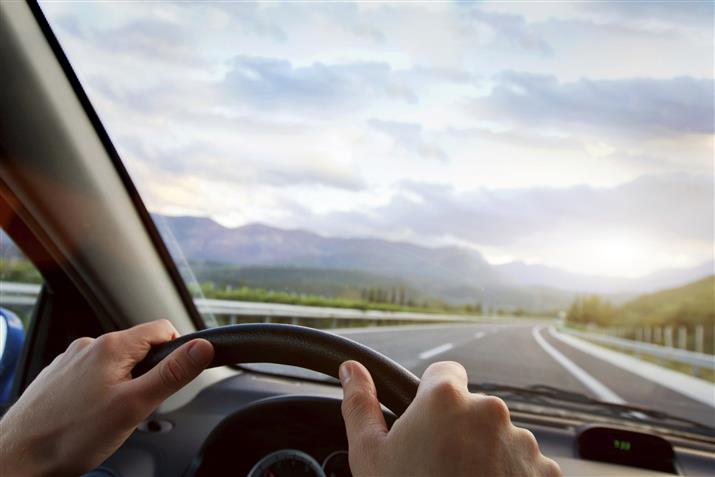Driver safety during the summer months
Being prepared can help you to stay safe on the roads this summer. We look at how to tackle the heat.
![]() 04/10/2018
04/10/2018![]() 10 minutes read
10 minutes read
While every driver takes extra care on the roads in wet or icy conditions, the need for cautious driving is not limited to the colder months.
Summer brings a number of unique hazards, which must all be carefully navigated to safeguard the wellbeing of the driver, passengers and other road users, as well as pedestrians.
The following tips can help to boost safety on the roads and limit the chances of the sun affecting your driving experience.
Glare and visibility
Despite the sun being more likely to make an appearance during the summer, visibility can actually be worse than in the greyer months due to the haze and glare it creates. Certain times of day such as sunrise and sunset are perennial hazards and so extra caution is always advised, but keeping a pair of sunglasses in your vehicle can provide a degree of protection. Keeping your windscreen as clear as possible on the inside and outside is also recommended, as is checking windscreen wipers for tears or damage and ensuring they are replaced as soon as possible. Fundamental to safe driving is also ensuring drivers undergo regular eyesight tests to ensure appropriate levels of vision.
Road surfaces
Anyone who has sat for too long in the sun will know that it poses a risk to skin, and such is its strength that it can have the same effect on road surfaces. Sticky tarmac is a common sight in summer, and can have the unwanted effect of loosening particles in the road or even melting the road surface, which then becomes dangerous to drivers. Not only can it cause holes that damage tyres, but it also creates small chippings that can easily crack windscreens and scratch paintwork. Keep an eye out for any temporary speed limits necessitated by loose chippings and ensure that any chips in a windscreen, regardless of how minor, are examined by a professional at the earliest opportunity.
Tyres
It is advisable to regularly check tyres for any damage or signs of puncture caused by either the road surface or high temperatures, as heat can increase the risk of a blowout if tyres are inflated to the wrong level. As many drivers make longer journeys during the summer, it is also important to inflate tyres to cope with any extra loading that takes place, in line with manufacturer recommendations.
Pollen and hayfever
Even if you have not suffered from the effects of hayfever for years, it can return to strike at any time, causing impromptu sneezing that can be dangerous if you are behind the wheel. The AA estimates that sneezing while driving at 70 mph can impair your vision for up to 100m. To help minimise the symptoms and effects of hayfever, take necessary precautions such as closing windows and vents to limit the amount of pollen particles entering the car. Regularly vacuuming carpets and mats can remove dust particles, while keeping tissues in the glove box, cup holder or inside the door can ensure they are always to hand. If you take antihistamines to combat hayfever, also ensure that you use the non-drowsy variant if you know you will be driving afterwards.
Vehicle hazards
There are many other hazards that come to the fore during the warmer months and can put road users at risk, such as tractors, which conduct a significant amount of activity during the day. These are often loaded with hay bales and agricultural equipment, making a large object even larger and obscuring the road ahead. As tractors frequently operate on country roads and drivers can be wearing ear protection equipment that limits their hearing, a significant amount of caution is required when following or overtaking one. Leave plenty of room before moving past them and also be prepared for sudden stops or turns, as the use of indicators is not a legal requirement for tractors during daylight hours.
Fatigue
Longer journeys necessitate frequent breaks, not only so you can fill up on food and drink, but also to give your eyes and brain a rest. RoSPA advises that motorists rest for at least 15 minutes for every two hours of solid driving, though for some people this may need to be longer, particularly for anyone with a medical condition. High-caffeine drinks such as coffee can provide an energy boost, although it is not advisable to eat a heavy meal before embarking on a long journey as this can bring about fatigue. Plan journeys before setting off so to take into account things like distance and road conditions to avoid the onset of fatigue.
Posted by Colin Gilstin, Group Safety and Environment Manager at Northgate









